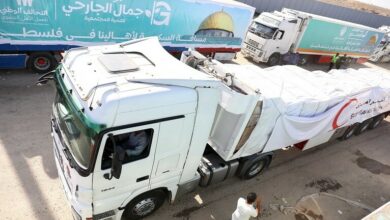
Economic crises serve to tempt political forces towards initiating a profound reform process and can also provide an opportunity for comprehensive change, or at the very least, to serve as a way to participate in the decision-making process to ensure that what is to come is better than what has been left.
It was Egyptian liberals who initiated the major changes that took place on January 25, 2011, only to melt into the revolution that ended with the rule of the Muslim Brotherhood.
When the state’s identity and survival were at stake on June 30, 2013, escape became the necessary option.
Ten years following political change, liberal political parties quickly succumbed to internal erosion and general inactivity or withdrew from the arena except for a few words to remind people of their existence, such as fighting terrorism or remaining steadfast during the coronavirus.
Now, amidst the economic crisis and heightened attacks on the Egyptian administration, these liberal political parties are taking a side that upholds the “jurisprudence of priorities” and makes observations on Egyptian developments that took place over the past eight years.
The thing is, what is happening is illogical, no more than momentary whims done while deciding on various projects and carrying them out meaninglessly. Worse still is that these projects harm greenery, and even more seriously, they threaten to erase the heritage and historical values of Egypt’s cities.
In truth, there’s nothing particularly wrong with occasional observations on what’s currently happening, such as warning of the risk of a lack of taste that suits delicate, artistic souls.
But the danger arises when these observations are meant to add to the piles of allegations others are making constantly, around the clock.
Worst of all is when no one takes the trouble to look around to see if our trees are still standing and if our heritage is still being preserved, with the only higher example they have being the architecture of Dubai!
I was among those who called for the construction of two cities similar to Dubai, one in al-Alamein on the Mediterranean Sea and the other in Safaga on the Red Sea. So long as Egyptians go to Dubai or cities of the like, which are in actuality an Arab reflection of Singapore in the Indian Ocean, why can’t we provide them with similar buildings, seas, and humidity in Egypt?
Alamein contains architecture similar to Dubai, but there is a great difference between it and the Gulf city in how they work and operate. Safaga is still fine, but the rest of the new cities did not take anything from Dubai, like New Mansoura, New Ismailia, and so on, which are sister cities that have a character derived from the originals.
Although the Administrative Capital has been accused of being built to mimic Dubai, which has become one of the most important cities in the contemporary world, the architecture of its official buildings is derived from Pharaonic heritage. Even its towers are based on ancient Egypt, from its heights and expansions to its artistic linework.
I too was anxious that with the Administrative Capital, Cairo would lose its “heritage”.
Instead, for the first time in the history of Egypt since the construction of “Khedive Cairo” under Khedive Ismail, the Fatimid, Ayyubid and Pharaonic Cairo heritages have been developed and the number of museums has doubled.
There is some validity in saying that our greenery is absent and tyrants have cut down the trees for their projects. Indeed, this is what we must insist upon in hopes of restoring it.
However, we should not overlook that greenery continues to thrive throughout Egypt.
If we were to take a look at Egypt on the “Yahoo” weather map, we find that the delta has extended so that greener areas now extend between the Damietta branch and the Suez Canal to the east, and between the Rosetta branch and the green sprawl to the west.
The Cairo-Alexandria Desert Road is no longer a desert, with plants extending 20 km deep to the east and west. And though some of the trees of Cairo and Giza have suffered, the Fustat area, as well as its museum, has recreated a completely modern neighborhood alongside the giant Fustat garden which will require some patience to be finished.
To conclude, though things remain far from perfect, the proverb “It is better to light a candle than curse the darkness” rings true.




